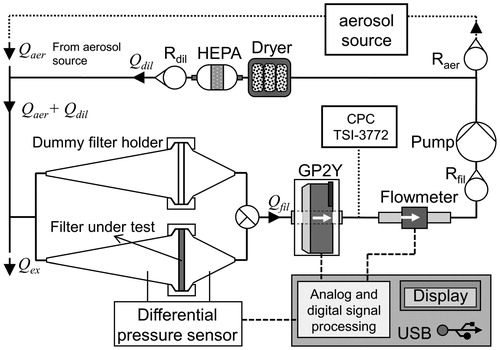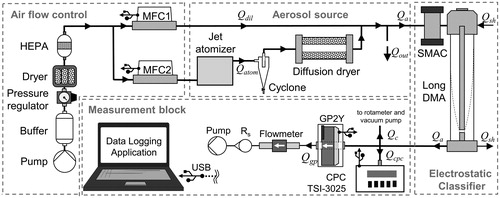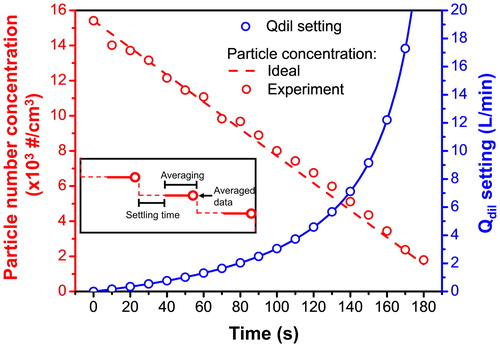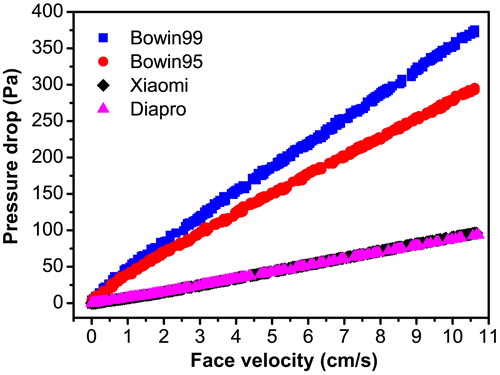Figures & data
Figure 1. (a) Original GP2Y sensor; (b) GP2Y sensor box; and (c) diagram showing the GP2Y sensor working principle.
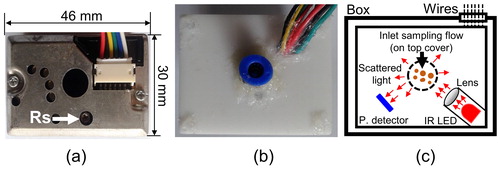
Figure 5. The particle size distribution of PM sources for (a) incense stick, (b) incense spiral, (c) mosquito mat, and (d) mosquito paper. Each test consisted of three replicates.
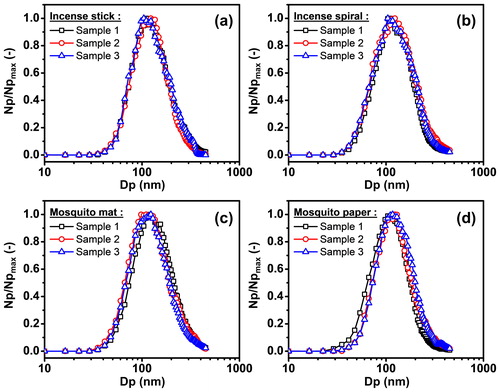
Figure 6. The GP2Y output voltage against particle number concentration at different sampling flow rates.
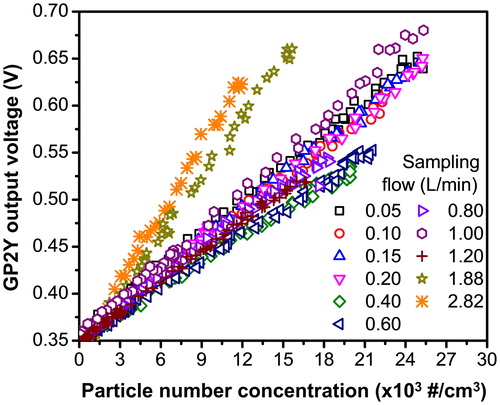
Figure 7. The GP2Y output responses to (a) PSL particles of various sizes (95, 163, 216, 234, and 303 nm) and (b) PM from various sources (incense stick, incense spiral, mosquito mat, and mosquito paper).
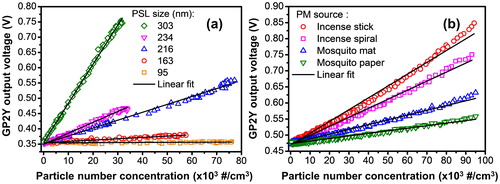
Figure 8. (a) GP2Y output responses to different Rs values using 303 nm PSL particles; (b) the effect of different Rs values on the intercept and slope of the linear fit to the data; (c) the amplified GP2Y output response compared to the original response. The experiment was done using 303 nm PSL particles at 1.00 L/min.
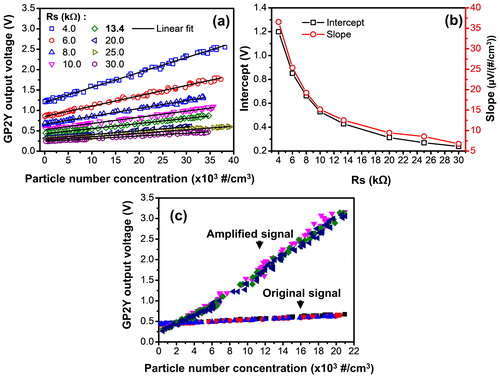
Figure 9. The comparison of Ps measured by the PAFT with the reference filter efficiency measured by the CPC reference instrument using PSL test particles at 163, 216, 234, and 303 nm.
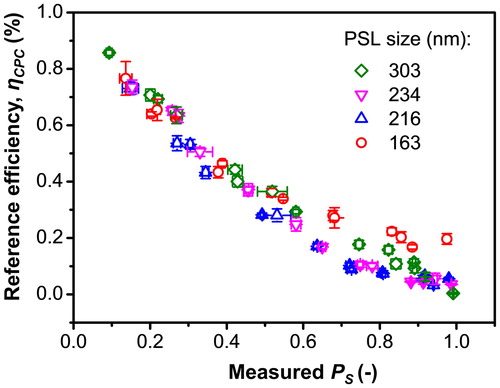
Table 1. The fitting results to the ηCPC vs. PS data from .
Table 2. Commercial mask filter samples used in this experiment.
Table 3. The efficiency of the mask filter samples, which were measured using PSL particles with the dpg of 303, 234, 216, and 163 nm and the face velocity of 5.3 cm/s.

